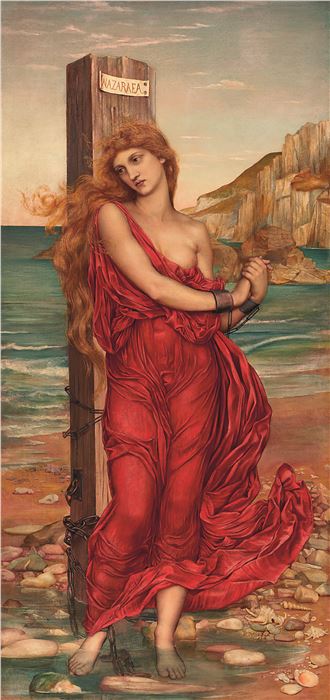Historically, female artists have been significantly underrepresented in the art world. Oftentimes it was the patriarchal ideology prevalent in society that dictated how the viewer should feel about pieces created by women, as opposed to a painting’s inherent virtues. Tate Britain’s lauded exhibition Now You See Us: Women Artists in Britain 1520-1920 is four hundred years in the making, showcasing the impressive history of the country’s female painters that never was.

Artemisia Gentileschi, Susanna and the Elders, c.1638-1640. Royal Collection Trust / © His Majesty King Charles III 2024
The young married Susanna, while in the throes of bathing in her private garden, is accosted by a pair of lecherous old men, indulging in the act of voyeurism. She is either to lay with them or be accused of adultery. The men, being judges, possess a thorough knowledge of the law, and know that the latter is punishable by death. And so does Susanna. Yet she chooses not to relinquish herself, to remain steadfastly virtuous, despite the ostensibly dire outcome of the blackmail. During the trial, the men are cross-examined, and inconsistencies are found in their testimonies, thus proving Susanna’s innocence. The biblical tale of Susanna and the Elders was a popular one for painters to depict during the 17th century, but one particularly close to the bone for Italian artist Artemisia Gentileschi. Gentileschi herself was raped in 1611, by fellow painter Agostino Tassi. And even though Tassi was found guilty and sentenced to be banished from Rome, during the trail Artemisia suffered torture by thumbscrews in order to ensure her testimony was honest.
Gentileschi’s ties to England are due to the artist joining her father, Orazio, in London in 1639. Orazio had been appointed court painter to Charles I and was working on a ceiling allegory of Triumph of Peace and the Arts at the Queen’s House in Greenwich. Charles I was an avid collector of art and had personally invited Artemisia to his court. Orazio died the following year, and Artemisia left before the onset of the English Civil War.
One of several variations of the theme, Susanna and the Elders was believed lost for many years following the selling of Charles I’s collection after his execution. It was rediscovered in 2023 tucked away in a storeroom at Hampton Court Palace, where it had sat gathering dust for over a century, and subsequently restored. The exhibition also includes Self-Portrait as the Allegory of Painting – another of Gentileschi’s pieces from the same period, also from the Royal Collection.

Evelyn De Morgan, The Martyr (Nazuraea), 1880. Southwark Heritage Centre, London



